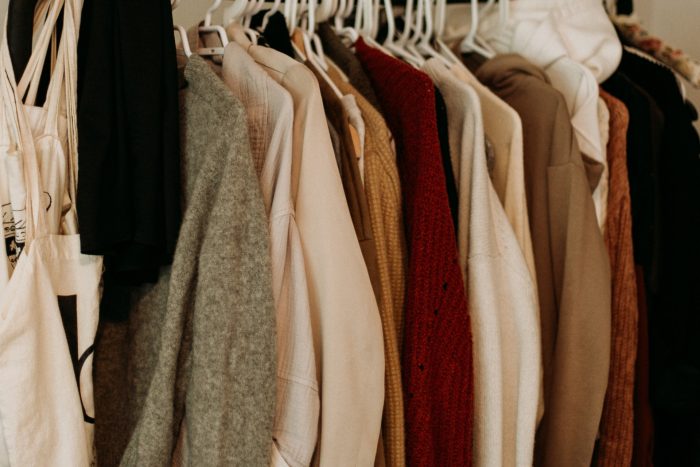It wasn’t so long ago that I learned that threads from our yoga pants end up in sea snails all the way in the deep arctic.
As an active person, the guilt of this prompted me to consider how I handle my laundry and the things I can do to make my closet generally more eco-friendly.
After pulling on an old pair of black pants, raggedy at best, to go to work recently, I realized that sooner or later I will need new workwear—my least favorite category of shopping. Actually, all shopping is my least favorite category. I’d rather do…anything else at all than shop for clothes.
And that is exactly what makes me the perfect target for fast fashion. I don’t have lots of money to spend on clothes, and even if I did, I would rather spend it on other experiences. I don’t have patience or the desire to spend copious amounts of time finding trendy items. Stick it on a conveniently located rack, or better yet, deliver it to my door, don’t break my bank in the process, and we have a deal. What I find joyless, I prefer to be painless.
Except this doesn’t work when inching our way closer to an eco-friendly lifestyle. Fast fashion does not fit into the equation. Synthetic fabrics leech into the environment (and our body tissues), unsustainable production methods emit more carbon emissions than all international flights and maritime shipping combined annually, and questionable labor practices often leave low-wage workers inhaling toxic fumes, in unsafe environments for long hours.
In the book Wear No Evil: How to Change the World with Your Wardrobe by Greta Eagan, she describes a sustainable method for building a planet-friendlier closet. While the book as a whole was not in the typical voice that would land itself on my bookshelf, I found her method, using what she calls an “integrity index” to be extremely helpful. One of my biggest gripes about overhauling our lifestyles in the face of convenience is how overwhelming it can be, and the approach outlined in this book avoids this, setting us up for greater success.
The integrity index is made up of 16 different factors. We choose our top four (with style being a default factor) whether it be organic materials, natural fibers, fair labor, or items produced locally, among several others.
The index is meant to serve as a tool to identify the questions we can ask about our clothing, “Is it natural? Is it grown organically and without pesticides? How does it support or harm groups of people who live near the areas where the fibers are dyed and turned into fabric?”
Once we have identified the features most important to us, we see how many of our four we can fulfill when shopping, and we will likely quickly realize that it’s difficult to hit them all with a single garment.
So, we practice flexibility.
Can we fulfill at least two of the factors we decided were the most important to us? That is the minimum needed to score in this game.
Considering the few pieces in my closet that I rely on, I hoped they would check the boxes on said two of my top four factors (I chose to leave style as the silent factor) which were:
1. Cruelty-free
2. Fair trade, meaning those who produce the products used to make the garments are compensated fairly.
3. Natural/low impact dyes
4. Natural fibers
Greta calls fulfilling all four factors on our list a home run. And that was cute, until I figured out that everything in my closet completely struck out.
Every. Single. Thing.
I discovered this horrifying reality via The Good on You App, which does a lot of legwork for us by rating fashion brands based on key factors in sustainability. The first factor being how the brands impact people through child or forced labor, diversity, and fair wages. Second, by influence on the planet through environmental policies, waste management, and types of materials used. Lastly, the effect the brand has on animals by how well they trace their animal products and any commitments they might have to reducing animal product use. Good On You marks down brands that use furs and exotic skins.
For now, I am still building my shopping list based on brand ratings and by sometimes swapping the top features on my integrity checklist. Other regular contenders for my integrity chart toppers are:
1. Social, meaning the garments are linked to a cause and have benefited someone in some way via charities or disaster relief, for example.
2. Recycled/upcycled materials.
Research and list-making are how I procrastinate things I don’t like doing—like shopping. Whether I consult an app, try to score points using an integrity index, or do research on my own, I’m at least more knowledgeable than before when it comes to building an eco-friendlier closet.
So, I will continue to pull on my raggedy black work pants until my next begrudged shopping trip, during which I will be armed with a sustainable, flexible approach and hoping to score a home run against fast fashion.
Please consider Boosting our authors’ articles in their first week to help them win Elephant’s Ecosystem so they can get paid and write more.












Read 4 comments and reply